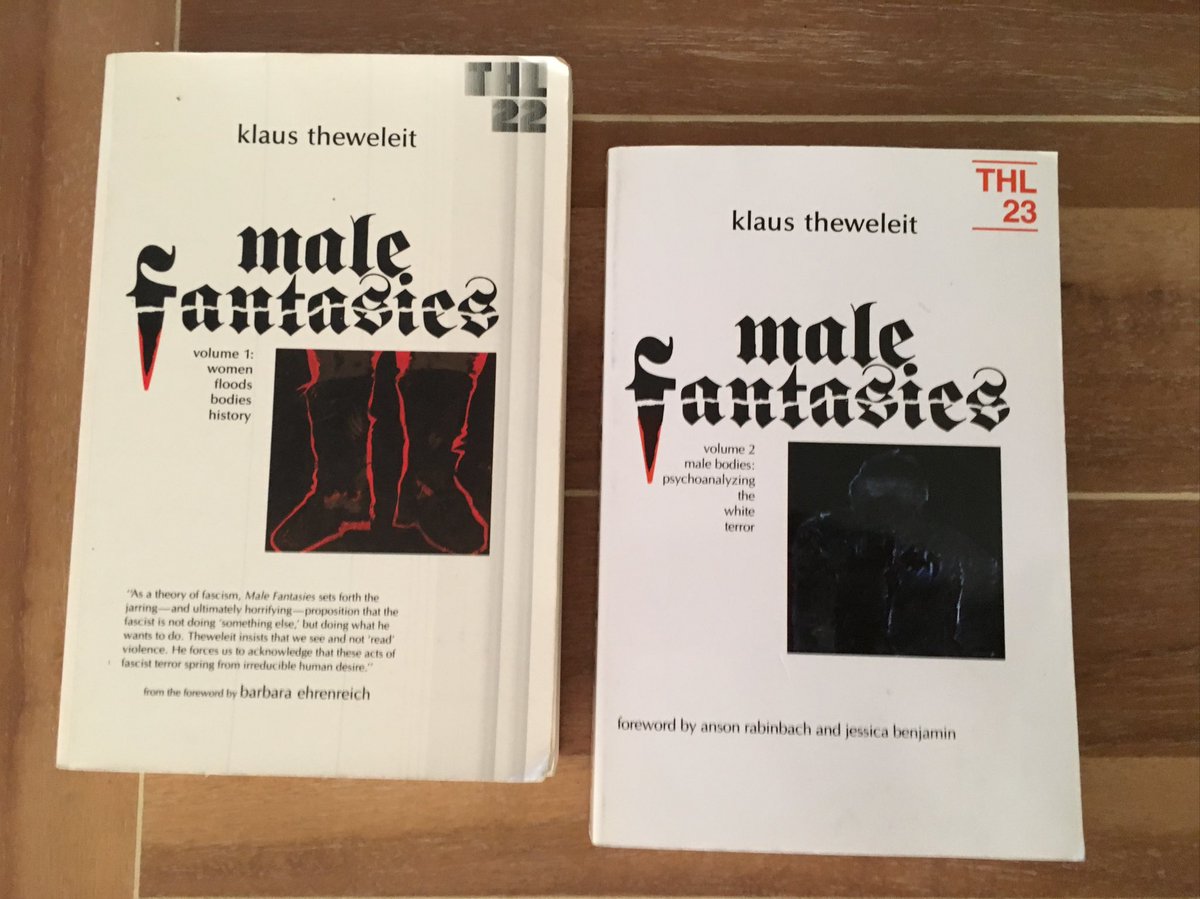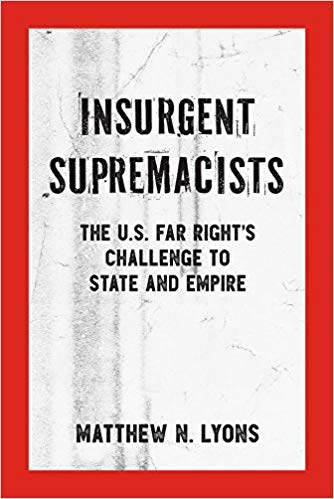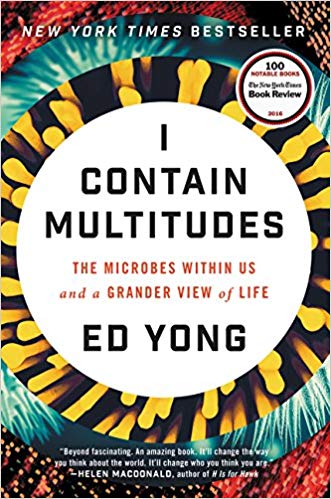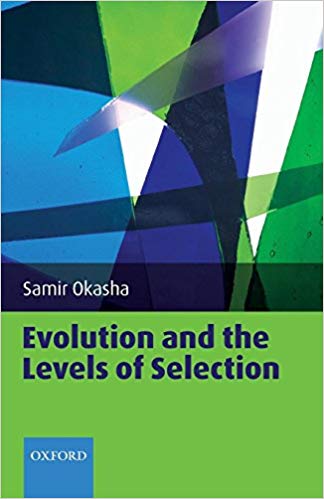Discussed in this post: 12 Books (Anxiety; Male Fantasies [2 Vols.]; Insurgent Supremacists; Discourse on Colonialism; The Femicide Machine; She Has Her Mother’s Laugh; I Contain Multitudes; Evolution and the Levels of Selection; A Mind Spread Out on the Ground; The Ministry of Utmost Happiness; and Grimorium Verum); 2 Movies (Together; and The Guilty); and 3 Documentaries (The Creeping Garden; Starless Dreams; and The Pass System).
Books
1. Anxiety: The Seminar of Jacques Lacan Book X by Jacques Lacan (edited by Jacques-Alain Miller).

Okay, buckle up. I’m going to see if I understand Lacan enough to explain what he says in this seminar.
First: anxiety is not an emotion; it is an affect related to desire. Second, the subject who desires is not an independent subject but is preceded by the prior introduction of the signifier. Third, is the Other [A] is bars the subject by placing them within the domain of the signifier (hence, “there is no auto-analysis, even when one imagines there is. The Other is there”). Fourth, this means that desire is always the desire of the Other [A]. Hence, we arrive at this initial formulation:
A | S
S | A
a |
Here we have the (big) Other[A], the primordial Subject [S] and the existent of the barred Subject ([S], the Subject as it is) which exists in the register of the Other, and the barred Other [A] which exists within the subconscious of the Subject and, ultimately, the object [a], the unobtainable object of desire which is only paired with a lack in the domain of the Subject. Later, Lacan shows that this lack can be signified as -ϕ, the absence of the phallus (which represents the lack of the phallus—wherein the phallus is understood as the desired object, “the (ϕ) is what I desire, but also what I can only have as (-ϕ)”—i.e., castration anxiety in relation to the Other). Alternatively, expressed as the relation of fantasy, the emergence of desire can be written as follows: S ◊ a.
Anxiety, then, emerges when something is made to appear in the place of the -ϕ. The proof of this is the appearance of the Unheimliche, the uncanny. But why is this so uncanny and why is it imminence and the possibility of something standing in the place of -ϕ that provokes anxiety? Because S is formed by the desire (of the Other) which turns them into a lack, and the absence of this formative lack produces anxiety.
Furthermore, when anything attempts to occupy the place of -ϕ, this reveals that the place cannot be filled and the Subject, themself, possesses a remainder that exists outside of the domain of the signifier. It reveals that any kind of demand “always has something illusory about it with respect to what preserves the place of desire.” Hence, again, the Unheimliche. Yet when the S tries to uncover this remainder by digging beneath the veil of the signifier (perhaps in an effort to recover S, the unbarred Subject), the S every only discovers another layer of signifiers—it’s signifiers all the way down. Because of the anxiety this produces, anxiety often then results in the passage a l’acte, the moment of the (barred) subject’s greatest embarrassment—the S acts in order to escape. This is to be strictly distinguished from “acting-out” which is the (barred) Subject’ performance for the Other
Hence, as Lacan emphasizes, anxiety is not without an object—but this is not the same as saying that anxiety is with an object. Anxiety is not without an object but this object is never the one that appears in the place of the subject’s lack (which is precisely why anxiety is produced any time something is put into that place). Anxiety, then, relates to a structural fault in S’s relation to A. It is produced by the unobtainability of the a.
Furthermore, the signifier that the other [A] imposes upon the Subject [S] is intimately related to this a because the Other seeks to find it’s a in the subject and this is the signifier imposed upon the Subject (now barred). S is produced by placing a over S. Hence, are initial formulation can be re-written as follows:
A | S
a | A
S |
Here, the barred Subject is located as the Subject as a signifier for the Other and the object a is the irreducible remainder exists above S. We can then further describe how A and S related to one another at each step:
A | S x
a | A anxiety
S | desire
Here x represents the “primordial subject moving towards his [sic] advent as subject,” anxiety presents itself with the appearance of the a and the Subject is barred because it becomes the subject of the desire of the Other. Here, in effect, I know that the other wants something of me, but I cannot be sure of what it is the other wants, and so I am left forever wondering (and anxious) as to whether or not I fulfill that desire (and, in fact, I learn that I never can). Therefore, “what the Other wants, what he [sic] wants even if he doesn’t know in the slightest what he wants, is nevertheless, necessarily, my anxiety” (emphasis removed).
The same formula can demonstrate the way in which anxiety mediates between jouissance and desire:
A | S Jouissance
a | A Anxiety
S | Desire
Jouissance is not to be confused with desire—it has more to do with the lawless (amoral) pleasure associated with fulfilling primal drives, whereas desire is bound to the signifier and entirely enmeshed with the domain of the law. Anxiety persists attempts to fulfill desire actually attempt (and fail) to fulfill jouissance. Here, then we can also return to Lacan’s formula for fantasy (S ◊ a). Fantasy requires S to stand in a polyvalent relation to a, symbolized by the rhomb “which represents disjunction, ᴠ, just as much as conjunction, ^, which is as much greater than > as lesser than <.” The a is irreducible, it is a remainder that S never attains. And so jouissance goes unfulfilled by desire (and, instead, is related to love that operates outside the domain of the law, as I explore in my recent post below).
This, then, is why Lacan asserts that anxiety is that which deceives not. It does not deceive because the object a forever eludes the Subject. Anxiety “is the only thing to target the truth of this lack.”
2-3. Male Fantasies (2 Volumes) by Klaus Theweleit.

My reviews were seriously delayed this month because, apart from spending a lot of time getting my mind around Lacan’s seminar on anxiety, I wanted to write a lengthy review of these two volumes which explore the formation and composition of the proto-fascist (misogynist) male and the damage he does—because, in my opinion, what Theweleit describes does not only apply to men in Germany in the inter-war period, it also applies (more and more every day) to men in our context (especially via the interweaving of misogyny and fascism). Theweleit writes with the sprawl of the kind of genius who is too smart to fit well within the academy and, while sometimes his tangents may feel odd or even uncomfortable, both volumes (women floods bodies history and Volume male bodies: psychoanalyzing the white terror) are both worth reading in full. These texts are a warning to all of us and, very importantly, help us to know both what we can expect from the current trajectory of patriarchy within the context of austerity fascism and what kind of tactics of resistance might work well or not at all. The insights here apply not only to questions like, “why does intellectual debate not work with men who troll online?” but also questions like, “what, then, is to be done?” Theweleit also does an excellent job of shifting the register of focus from the domain of the intellect and reason that that of desire and affect. That is to say, we will never understand violent men and those driving to inflict great harms upon others (and the Other most especially) if we don’t understand the pleasure that these men derive from this. Fascists are fascists, misogynists are misogynists, because they want to be. Theweleit demonstrates why this is the (almost entirely hopeless) case. Highly recommended reading.
4. Insurgent Supremacists: The U.S. Far Right’s Challenge to State and Empire by Matthew N. Lyons.

Matthew N. Lyons offers some good insight into various permutations of the far Right—from the alt-Right to Christian Nationalists, to some more separatist, militia-style groups, he offers a thoughtful review that helps to distinguish various groups form each other while also showing how and where they overlap and conflict. However, I find his reasons to not describe the USofA as a fascist State to be bit curious. Essentially, he argues that the USofA looks too much like fascism at every stage of its history and so it doesn’t make sense to say, “America has become fascist *now* [i.e., under Cointelpro, under Bush II, under Trump I, etc.].” Furthermore, given that the USofA took part in a very big war against fascist States half a century ago, Lyons argues that it’s better to find different ways of describing the USofA that allow for more nuance in our understanding of the far Right.
Now, I’m not opposed to nuance but, bearing in mind Mark Bray’s argument that fascism was present in the KKK well before it popped up in Mussolini’s Italy or Hitler’s Germany–not to mention Gerald Horne’s argument about how the American War of Independence was actually a “counter-revolution” that sought to ensure that slaves would remain slaves and that expansionism would be able to continue unabated, so that European Settlers could continue to grow extremely wealthy—it seems to me better to argue that America, just like Canada, just like Rhodesia, just like any other settler colonial State occupying stolen land, is a fascist (or proto-fascist?) State. This is why, as the documentaries of Marcel Ophuls (e.g., “Hôtel Terminus”) so clearly demonstrate, many of the best and brightest and most ruthless Nazis had no trouble switching to work for the Americans after the war because they saw the Cold War as the continuation of *the very same war* they had already been fighting under Hitler.
WWII was not a fight between the forces of fascism and the forces of freedom. WWII was an inter-fascist struggle wherein the choice between German fascism and American fascism has now been clearly demonstrated to be little more than the choice between Pepsi and Coke.
5. Discourse on Colonialism by Aimé Césaire.

Césaire is writing about colonialism but, more specifically, he is writing about (what he takes to be) Europe’s inevitable decline into fascism. For fascism, Césaire argues, is nothing but colonialism come home to roost. It is Europeans choosing to treat other Europeans the same way that they treated residents indigenous to various colonies. This is possible because colonialism transforms otherwise kind and sensitive human beings in beasts. Not only by enslaving people in the colonies and transforming them into beasts of burden (or reproduction or whatever else) but by becoming the kind of beings who enslave or transform others, Europeans lose their conscience, lose their soul, lose their sensitivity and kindness, and so fascism blossoms and grows. Although Césaire writes this more as a political tract, his argument is (to my mind) quite solid. Which, going back to my remarks on Lyons, helps to show why fascism will always be a part and parallel of the American project. Any settler colonial state is, fundamentally, proto-fascist (if not full on fascist from beginning to end).
6. The Femicide Machine by Sergio González Rodríguez.

I think I need to take a break from reading about Ciudad Juárez. It’s pretty terribly depressing stuff. Not only because of the violence murdered and disappeared women experience, but because those responsible for the violence are so deeply connected to bases of power, wealth, and policing so that they can, and do, act with impunity. I was already feeling like I needed to step away but Sergio González Rodríguez is widely regarded as perhaps the expert journalist writing about Juárez and so I decided to read this little book. He does a good job of relating the history, its multiple dimensions, how the femicide machine continues to operate today (murders and disappearances didn’t stop after the ‘90s and early 2000s; in fact, they increased around 2010 or so and continue to take place in high numbers), and how this all is awful and seemingly hopeless. It’s a bleak picture. Feeling especially bleak in light of the ongoing femicide directed at Indigenous women and girls in Canadian-occupied territories and the concentration camps for migrants that the USofA are doubling down on. And that’s the thing about Juárez and it might be why I have been circling around it so frequently of late—it’s an apocalyptic situation but, like a true apocalypse, it reveals a great deal about our world. And maybe I need a break from that, too.
7. She Has Her Mother’s Laugh: The Powers, Perversions, and Potential of Heredity by Carl Zimmer.

I wasn’t sure if I was going to get into this book—I was hoping for a little more epigenetics and a little less of a broader review of all things hereditary—but I’m glad I stuck with it. It was an absolutely fascinating read as it journeyed from the world of eugenics through chimeras, to mapping genomes and even building genomes with CRISPR technology. The world of DNA and RNA is truly fascinating and, although Zimmer gives a more journalistic account of these things, the stories he relates are so endlessly intriguing that I found myself pulled in from (almost) the very start to the very end. It is both awe-inspiring and terrifying to discover the technological abilities we already possess. Recommended reading.
8. I Contain Multitudes: The Microbes Within Us and a Grander View of Life by Ed Yong.

You win some, you lose some with popular science books. Ed Yong does a really great job of providing a sweeping overview of a multitude of ways in which bacteria are intertwined with and constitutive of other forms of life—from coral reefs to your gut microbiota—but I sometimes felt like we were just skimming the surface. Plus, having spent a fair bit of time reading in this area now, a lot of the examples he provided were familiar to me. This is a great text if you want an very readable introduction to the microbial world but if you’re already immersed in that world (well, of course we are all immersed in that world … but you know what I mean), then it falls a little flat.
9. Evolution and the Levels of Selection by Samir Okasha.

Evolutionary scientists try to understand how various life forms come to be, how they continue to be, how this continuance modifies their being, ultimately giving rise to new life forms, and so on. However, given the complex ways in which life forms are nested into other life forms—from the mitochondria in cells to the bacteria in the human microbiome, to the place of an individual human within the life of homo sapiens as a whole, to the place of homo sapiens within Gaia, and so on—many scientists have wondered what level of life we should look to in order to discover what drives or causes evolution to take place. Is it changes in DNA that are responsible for evolution? Or are changes in the organism as a whole responsible for changes in the DNA? Or are changes in the environment responsible for changes in the organism, which then drives changes in the DNA? Or is it some combination of all of these things? Or what?
Samir Okasha does an excellent job of addressing these questions by looking at the ways in which various scientists (and philosophers of science) have answered them. He shows of different parties are often using slightly different definitions of key terms, leading to a focus on different case studies, producing different conclusions that sometimes only appear to be incompatible due to the initial terminological confusion (but sometimes, of course, the differences are incompatible). Okasha is less interested in answering all the questions himself than he is interested in clarifying the nature of the discussion and highlighting what approaches fit or contradict what other approaches and what approaches he finds most plausible based upon the evidence at hand. I found this to be a very useful book and one that I am glad to have read at this stage of my own journey into these things. It is more technical than “popular science” books and frequently employs algebraic equations but Okasha clearly explains all of his terms and so, even someone not gifted in maths (i.e., me!) can follow along every step of the way.
10. A Mind Spread Out on the Ground by Alicia Elliott.

Alicia Elliott’s collection of autobiographical essays (think something like a Tuscarora Leanne Betasamosake Simpson with a dash of Maggie Nelson thrown in) has received a lot of praise and it is well-deserved. He reflections are well-crafted, deeply moving, and the deceptively simple language contains a great deal of wisdom and heart. In them, she reflects on her experiences growing up as a girl and then a woman with a Tuscarora father and a White, Catholic mother. It’s a very personal presentation that offers many teachings as a gift to those who would read them. I would recommend it, especially to others who live on Great Turtle Island (and especially, especially to those who live here although their people come from other lands).
11. The Ministry of Utmost Happiness by Arundhati Roy.

Arundhati Roy is something of a personal hero of mine. Everything she does leaves me feeling somewhat awed. She is a brilliant writer, she moves just as easily between fiction and non-fiction, she is active on the ground in the struggle, she is courageous, tenacious, and fights like hell with those fighting the good fight, but she is also gentle, humourous, and full of love for the beauty and goodness that is everywhere around us. My only quibble is that she published the God of Small Things (which won the Booker prize) back in 1997 and then did not publish another storybook until twenty years later. I mean, okay, I understand how fighting Monsanto with a bunch of peasant Maoists, or resisting the vicious classist, imperialism of Narendra Modi (who is featured in The Ministry of Utmost Happiness, albeit under another name) alongside of those whom Modi’s elite consider untouchable, might take up a bit of one’s time… but, of course, those who are in love with beauty and goodness (and love), know that stories still need to be told. I’m glad she told this one. I enjoyed it.
12. Grimorium Verum: The True Grimoire. First Edition 18th Century. Edited by Tarl Warwick.

While it’s fun to read collections of old spells, I’m not sure how realistic it is to think I can get a dead man’s head to plant in my yard in order to grow beans that make me invisible. Also, I feel like the instructions on how to not get fucked over by the demons you summon could have been a little more clear. This is kind of like the anarchist cookbook but for black magick. It seems kinda cool but is way too vague and so you’re probably just gonna end up hurting yourself.
(Although if anybody does want to leave me their head in their Will when they die, let me know. I wouldn’t mind giving those invisible beans a shot—as long as Doggie doesn’t dig up the head mid-spell process and run around the neighbourhood with it. That wouldn’t be good. I should check what the spell says about how deep to bury the thing, and if it’s bad mojo if Doggie accidentally pees there. Magick is complicated. I feel like figuring out how to actually turn invisible is like trying to figure out how to beat the lottery. Maybe one or two people have figured it out. But the rest of us, well, we rely on luck and there ain’t much of it going around.)
Movies
1. Together (1956) directed by Lorenza Mazzetti.

Set in the East End of London shortly after the war—with bombed out lots and buildings still visible in the background—Mazzetti’s film follows two deaf-mute workers through their day-to-day lives. As a part of the “Free Cinema” movement that had just launched in London at that time, it strives to accurately depict the average events of an average day in an average life and so eschews any formal dialogue (in fact, there is no dialogue at all in the film as we frequently “hear” people from the perspectives of the protagonist and, apart from background noise and soundtrack, the only voices are those of the children who constantly harass the workers). As a cultural relic, a glimpse into a world that was not so long ago but that is no more now, I enjoyed the film. It’s also good to see people who are differently-abled starring in a film in what feels like a not gimmicky and not exploitative manner (in this regard, it feels more like a precursor to Slaboshpytskiy’s The Tribe [although that film was seriously troubling for other reason!] than A Quiet Place).
2. The Guilty (2018) directed by Gustav Möller.

The Guilty is subtly brilliant. If you don’t pause to think about it, you might forget that you just spent an hour and a half watching a guy talk (and then not talk) on the phone for an hour and a half. One main actor. A few voice actors. A handful of extras. And this ends up being one of the best suspense movies I’ve watched in a long time. It’s very well done—well cast, well acted, well written, well shot—and so it pulls off what others who rely on much bigger budgets and many more special effects wish they could do.
Documentaries
1. The Creeping Garden (2014) directed by Tim Grabham and Jasper Sharp.

Slime mould! It turns out that it’s an amazing organism and the shots that Grabham and Sharp have captured of slime moulds as they grow, pulse, travel(!), feed, and reproduce left me sitting on the couch with my mouth agape, my potato chips completely forgotten in the bowl in my lap. The world is so full of wonder, I don’t think you can focus on anything for too long before you start saying wow. I spent too many years not saying wow. I’m glad for documentaries like this that don’t let me forget the wonder now.
2. Starless Dreams (2016) directed by Mehrdad Oskouei.

I have waited three years to watch this movie and while I am sometimes inclined to get overly excited and then somewhat disappointed when I look for a movie this long and then finally watch it, Starless Dreams did not disappoint in anyway. It is fantastic. It follows a group of young women who have been incarcerated in Iran, mostly on charges related to drug possession, vagrancy, and theft, although one young lady is there because she helped her mother and sister murder her father—she is scheduled to be executed although we don’t know when exactly that will happen or how long she has to wait before she is killed). It’s an intimate snapshot into their lives and the generational traumas they carry. It shows how patriarchal cultures (i.e., cultures like ours) allow abusive men and fathers to control the narratives that determine the fates of those who are the victims of their abuse. All of these girls (like all the youth I know who have been incarcerated in Canada), are more sinned against than sinning. It’s a heartbreaking glimpse into a world where there is no possibility of a good outcome for them. Several do not want to even be released from prison because the world outside means returning either to an abusive family or life on the streets. In prison, at least, they are safe from men. And, time and again, we see them looking after each other there.
Part of what is great about the ways in which Starless Dreams makes us think about incarcerated youth is the way in which the traditional Muslim attire that the young women wear—the head coverings and dark dresses—brings to the fore what we often forget when looking out homeless and incarcerated youth in our context who might be blinged out, covered in tattoos or dressed like a gutter punk: these people are so, so young. They’re kids. They’re vulnerable, not only to domestic violence and men who prey on street kids, but vulnerable to the system that silences their voice, respects their abusers, and is structured in a way that discredits them. These young women are lovely. And doomed. Like so many others whom I have known.
3. The Pass System (2015) directed by Alex Williams.

From the 1860s up until the 1940s, with the full complicity of successive Canadian Prime Ministers and the Royal Canadian Mounted Police, the Canadian Government forced Sovereign Indigenous nations (often using tools like forced starvations, child theft, and mass incarcerations to accomplish this) on Reserves and then told the Indigenous peoples living on Reserves that they need a Pass from the Indian Agent overseeing the Reserve if they were to get permission to leave. Technically, this was not legally true or valid, but the Government, the successive Prime Ministers, the Indian Agents, and the RCMP (who forcibly returned or jailed “Indians” who were off reserve without permission) exploited their positions to misled Indigenous peoples and maintain the illusion of legality until the 1940s (although, even after political figures and the head of the RCMP issued statements that they were not enforcing the Pass System after that, some Indian Agents maintained the illusion for decades after—passes have been found that were dated as late as 1969). Alex Williams short documentary does a good good of relating this little-known piece of Canadian history (little-known to Canadians, that is). It took some work to dig up the details of this as the federal government did their best their best to gather and then eliminate the evidence of this (and, if we were stuck relying on the federal archive in Ottawa, we we be hard-pressed to put all the pieces together). It’s an important part of our history. Remember: Canada is genocide. And it can only exist because it forcibly and militarily occupies lands that belong to others.